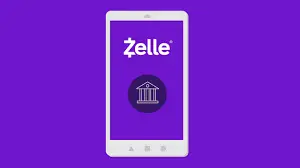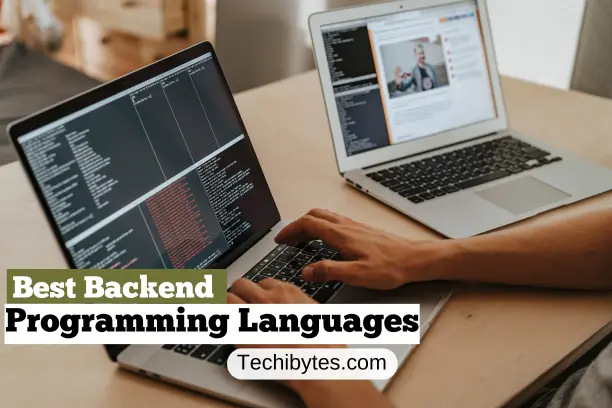Smart contract platforms facilitate, validate, and enforce smart contracts. They provide the blockchain infrastructure for smart contracts, offer programming and testing services for smart contracts, and host the implementation and execution of smart contracts. The platforms further include the inputs and outputs of smart contracts in the blockchain.
For instance, a travel insurance smart contract might collect flight details as input and make a payout to the policyholder if the insured trip is canceled as its output transaction. Platforms for smart contracts provide standardization, security, and support. Some platforms provide smart contract developers with Software Development Kits (SDKs) and templates.
On a blockchain exists computer code that constitutes smart contracts. The logic of the code specifies the contract’s terms and serves as an agreement between the parties. Smart contracts are self-executing and do not require the assistance of an attorney. Input triggers will automatically configure the smart contract and conduct stated operations, including releasing cash, making payments, and transferring assets, when certain circumstances are satisfied.
These transactions are carried out without the participation of middlemen. When a transaction is finalized, the blockchain is updated and can be instantaneously accessed by all parties involved. The code is unchangeable. If adjustments are wanted in the future, a new smart contract would need to be developed.
Table of Contents
Smart contracts can be designed to make payments, offer loans, acquire products or property, trade information, or do any other action considered valuable by the parties involved. A programmer writes the code for smart contracts. Templates, web interfaces, and other online tools are being employed to ease processes. These platforms enable the development of decentralized financial apps (dApps) and blockchain-based coins.
If a smart contract’s underlying code contains faults, unintended transactions may occur. Transactions on a blockchain are irreversible. By giving a risk score for smart contracts, Blockchain Analysis Software, which examines the code of smart contracts, may be utilized to reduce this risk. Existing smart contracts can be used as the foundation for the creation and deployment of new smart contracts by use of upgrade plugins.
Users of smart contracts include:
– Supply Chain and Logistics firms to document the transportation of items, automate payments, and update inventories in real-time.
– Health Care for secure data capture and transmission
– Insurance firms for accelerating claims processing and payment
-Retailers and Suppliers to increase confidence
– Commerce Industry for Rapidity and Productivity
– Governments want trustworthy, tamper-proof voting
Smart Contract Platforms Characteristics
Platforms for smart contracts should possess the majority or all of the following traits or characteristics:
– Development, implementation, and execution of smart contracts
– No Third-Party Required
– Global Availability and Execution
– Facilitates Crypto Transactions.
What is the function of smart contracts?
– When a smart contract is deployed, it receives an address. For instance, you can view the address of each smart contract on Songbird explorer. This address is utilized for contract interaction and performance.
– Depending on the developer-written logic, smart contracts can hold a variety of values. For instance, you may program your smart contract to save a person’s name. Generally, it looks like this: Name of the string “Alexandra”
– You and others will be able to engage with the smart contract once it has been posted to the blockchain. For instance, EOSIO permits the uploading of new byte code to amend smart contracts, but Ethereum prohibits such uploads.
– During the execution phase, a collection of nodes perform the smart contract functionalities described in the transaction. Then, based on the blockchain network’s consensus process, these nodes compare their performance and select the one that would be preserved.
– Proof-based consensus (Proof-of-Work, Proof-of-Stake, etc.) requires each node to demonstrate that it has done a certain operation or possesses a particular value. The first node to provide solid evidence is elected as the leader.
Consequently, this node may contribute the outcomes of its operation to the blockchain. In addition, there exist hybrid consensus protocols, such as those utilized by the Solana network, which are based on both Byzantine Fault Tolerance and proof-based consensus protocols.
– The valid result is added to a block, which is subsequently appended to the blockchain. If a verified transaction altered the internal variables, the modified values are now the starting values for subsequent transactions.
Comparison of Smart Contract Platforms
Consider the following while utilizing smart contracts:
Scale:
Corporate solutions are accessible to large businesses, but maybe cost-prohibitive for SMBs.
Performance:
For exceptionally rapid or high-volume processing transactions, look for a platform that best meets this need.
Ease of Entry:
Look for platforms that already have large, well-established development bases and resources to simplify and speed up the process of creating smart contracts, This will facilitate the onboarding process for new users. This is especially pertinent for firms with little blockchain experience or resources in-house.
Location:
If you’re looking to expand your firm into new international markets, you may find that certain platforms are already well-established in those other countries.
Cost:
Creating a smart contract is time-consuming and expensive. Understand your development expenses and processing fees before initiating development.
Safety:
Large platforms with a lengthy history are more likely to be safe.
Pricing Specifics
The use of platforms for smart contracts incurs two costs: the creation and testing of the smart contract, and its deployment and processing. Due to their technological sophistication, the development expenses for even a simple smart contract might reach approximately $7,000.
Complex contracts may cost $45,000 or more, with really customized contracts reaching six figures. Your contract’s intricacy influences the pricing. The cost of processing is determined by the resources required to deploy and operate the smart contract.
List of Smart Contract Platforms

1. Ethereum
Ethereum is the leading platform for smart contracts. While the majority of people are familiar with the Ethereum Project through its currency, Ethereum or Ether or ERC-20, many are unaware that it is one of the most fascinating companies of the past two decades. It is the main smart contract platform in the world and the most popular option among developers.
The platform went live for the first time in July 2015. Since then, it has evolved exponentially and now supports smart contracts for anything from online games to initial coin offerings (ICOs). In reality, the great majority of initial coin offerings (ICOs) already employ the ERC-20 token standard to conduct such offerings.
The standardization and support provided by Ethereum’s smart contract platform are one of its most attractive features. Ethereum has published a set of precisely defined standards for developers to adhere to, making the creation of smart contracts less difficult and hazardous.
In addition to having the largest market capitalization of all smart contract platforms, Ethereum is committed to enhancing the creation and operation of smart contracts. To this purpose, they have developed their programming language for smart contracts, Solidity, which not only aids in standardization but also makes contract creation considerably simpler.
2. Cosmos blockchain
Cosmos is a Layer 0 blockchain with 140 validators and a mechanism for inter-blockchain interactions. This blockchain intends to establish a network or ecosystem of intercommunicating blockchains, a sort of internet of blockchains. The majority of Cosmos blockchains have a restricted number of validators.
Soon, Cosmos will deliver new roadmap elements that will increase the ATOM token’s usefulness significantly. For example, staking derivatives and staking across chains. Cosmos may be utilized as a platform for extensible smart contracts and as a decentralized trading medium.
Tendermint, the Cosmos consensus algorithm, is incredibly fast and can manage the movement of data between several blockchains via Proof of Participation (PoS). Cosmos is among the most efficient smart contract systems available since Tendermint’s scalability reaches more than 10,000 transactions per second.
3. Near Protocol
Near Protocol is another leading platform for smart contracts. This protocol was founded by former Google and Microsoft programmers. They generated $50 million in the first four months by only showcasing their revolutionary ideas for blockchain technology without having developed anything. Current Near protocol includes roughly 60 validators, hence it is somewhat centralized.
Near is constructed using a new layer one blockchain. It is partitioned and employs delegated proof-of-stake consensus, which enables scalability and security. According to their site, they are constructing an infrastructure for Web 3.0 that will make it difficult for tech corporations to steal personal information and for governments to shut down the internet.
Their proof-of-stake protocol is referred to as DoomSlug. DoomSlug enables Near to reach a practical conclusion with a single round of discussion. It implies that instead of waiting for 35 more blocks on Ethereum, you just need to wait for one on Near. Therefore, Near facilitates the efficient and safe processing of transactions.
Additionally, their sharding process is pretty unusual. Near, unlike many other blockchains that utilize side chains, has its system, NightShade, where shards are utilized. All of these snapshots of these shards exist on the main blockchain. Each shard has a maximum of 100 validator seats, and each seat lets you serve as a validator. As more individuals join the shard, the cost of validators increases.
The Aurora mechanism is what makes Near interesting as a smart contract platform. It’s a scaling solution for Near’s second layer that enables developers to copy and paste their Ethereum apps onto the Aurora network.
4. Elrond protocol
Whenever it comes to smart contracts, it is crucial to have a system that guarantees contracts are executed in the correct sequence and on the correct shard. Here, Elrond comes into play. This smart contract platform provides a solution that prevents cross-shard locking/unlocking by assigning and transferring smart contracts to the shard where their static dependencies exist.
This dynamic state sharding system divides and combines shards in real-time when network capacity increases. By balancing network sharding, state sharding, and transaction sharding, Elrond’s capacity is made extremely flexible.
This blockchain employs Secure Proof-of-Stake (SPoS) consensus, which elects validators inside shards after each round. On WASM, Elrond additionally developed a specialized smart contract execution engine (the Elrond Virtual Machine). In this system, developers are free to code in any programming language of their choosing. This protocol’s native cryptocurrency, eGLD, is utilized as a governance mechanism for validator incentives, staking, and payments for smart contracts and transactions.
5. The Algorand blockchain
Algorand is a moderately quick and affordable network (0.001 Algos per transaction) with 1,000 transactions per second. Contracts on Algorand can support the requirements of practically any dApp. It includes Python, Reach, and Clarity, three programming languages that give the ideal balance to developers.
This smart contract platform is favored by asset issuers and asset management platforms. It is the first carbon-negative technology to provide smart contracts at Layer 1 at the same speed as regular transactions.
Algorand Virtual Machine (AVM) executes smart contracts and is accelerating itsștiitificștiinștiince Soon, AVM will support programming languages that are Turing-complete for smart contracts. Similar to Ethereum, developers construct smart contracts in Solidity and then convert them to bytecode for the execution of the Ethereum Virtual Machine (EVM). But without the astronomical gas prices…
6. Avalanche protocol
Smart contract developers have swiftly adopted Avalanche blockchain, and there are strong reasons for this. This protocol is intriguing because, unlike other blockchain networks, it can withstand an attack comprising “greater than 51 percent” In actuality, you require at least 80 percent to control Avalanche. That’s quite a lot! This blockchain can execute transactions quicker than the majority of blockchain networks in existence today, without sacrificing security or decentralization.
Algorand employs a three-chain subnet architecture and an unusual consensus protocol that combines the advantages of Nakomoto consensus and the benefits of traditional consensus processes without compromising decentralization.
The three-chain subnet design implies that Avalanche is comprised of three blockchains, providing application developers full flexibility and control. Although not all alleged “Ethereum killers” are EVM-compatible, Avalanche is. This is a major advantage since developers can easily and cheaply transfer their dApps from Ethereum. Therefore, developers do not need to learn a new programming language to create smart contracts on Avalanche.
This protocol makes it easy to be a validator, which is an additional benefit. Participation in the network does not require pricey specialist equipment. It is an extremely lightweight protocol, resulting in minimal computation needs. You just need 6 GB of RAM and 200 GB of storage space.
7. Nem
Nem was introduced on 31 March 2015. Some developers choose it because it is written in Java, one of the most popular programming languages in the world. This makes it extremely accessible, as programmers do not need to master platform-specific programming languages such as Solidity etc.
A second point worthy of mention is that in comparison to more recent platform-specific languages like Solidity, Java has been around for a lot longer and as a result has fewer security flaws that may be exploited.
According to multiple security experts, Nem’s new Catapult or Mijin v.2 versions has made it the most secure smart contract platform available. It is an industry milestone that enables new blockchain database functionality possibilities. Nem’s greatest selling feature is that it is very scalable. Additionally, although Ethereum can perform around 15 transactions per second, Nem can manage hundreds. This is the reason why more and more developers are abandoning platforms such as Ethereum.
8. Stellar
Stellar was established in 2014, rendering it one of the earliest platforms for smart contracts. Stellar is managed by the Stellar Development Foundation and has been hailed as one of the most promising blockchain businesses available. Numerous recent success stories involving significant corporations agreeing to integrate the Stellar platform into their current infrastructure have persuaded industry insiders that the Stellar network is truly on the rise.
The facilitation of international payments is one of the primary areas in which organizations seek to employ Stellar. Late in 2017, it teamed with IBM and KlickEx to create a new low-cost method for transacting international business in the South Pacific area. When it comes to the most advanced platforms for smart contracts, Stellar is perhaps simpler and easier to use than Ethereum, although it is possibly not as basic as Nem. Nonetheless, it is intended to support basic smart contracts, such as ICOs.
9. Terra LUNA blockchain
This blockchain is a network that uses the technique of proof-of-stake to maximize the benefits of crypto potential, emphasizing mass processing systems and the establishment of stable coins. Terra’s economy is user-driven, with over 1.5 million users and all the required incentive mechanisms.
This blockchain is among the best smart contract platforms because of its Defi-ready architecture, which includes on-chain swaps, pricing oracles, stable coin assets with numerous denominations, and community governance. CosmWasm-enabled smart contracts can be efficiently powered by Terra’s modular plumbing. Smart contracts built in Rust, AssemblyScrip, or Go may execute on several chains.
Terra employs a Tendermint BFT consensus with a delegated proof of stake mechanism led by the top one hundred validators. This consensus mechanism enables transaction batches to occur in about six seconds, resulting in rapid block completion.
10. Solana blockchain
Solana is a quickly expanding, permissionless, high-performance blockchain that offers transactions that are lightning-fast, scalable, and inexpensive. This blockchain is compatible with smart contracts written in C++, C, and Rust.
Due to its scalability, sub-second block timings, and capacity to handle thousands of transactions per second, Solana’s ecosystem is home to several promising Defi initiatives. Solana employs a Proof of History cryptographic function and a Byzantine Fault-Tolerant (BFT) consensus algorithm. In conventional blockchains, a single operation validates and collects all the transactions for the following block. Proof-of-History enables events to be handled in parallel, hence enhancing the network’s performance.
External accounts can interact with Solana-deployed smart contracts and hold data about program integration, hence providing a logical separation between accounts and contract functionality. Solana accounts may hold data such as wallet information, whereas Ethereum accounts are only pointers to wallets. The adoption of Solana is expanding dramatically. It already hosts more than 400 projects, including prominent NFT markets, Defi projects, and the decentralized oracle network Chainlink. FTX co-created the derivatives exchange Serum on Solana, which intends to become a trustless, Defi-only, non-custodial DEX.
FAQ
What are smart contracts?
A smart contract is a blockchain-based digital contract that permits an agreement and, on occasion, an exchange between participants. They may be used to agree on a property transfer or automate supply networks, among other applications.
What is a decent platform for smart contracts?
Ethereum is an excellent platform for creating and hosting smart contracts. Solidity, the platform’s smart contract language, facilitates smart contract creation.
What function do Smart Contract Platforms serve?
Platforms for smart contracts install, validate, and execute smart contracts. Smart contracts are produced via blockchain technology.
Which are the top two Smart Contracts Platforms?
Ethereum
Solana
Conclusion
When designing a decentralized application, selecting the optimal smart contract platform will be among the most crucial decisions you make. Your decision is not only based on technology. Consider what the various platforms provide, how they are growing over time, and who is engaged with each one.
If you liked this article, then please subscribe to our YouTube Channel for WordPress video tutorials. You can also find us on Twitter and Facebook










